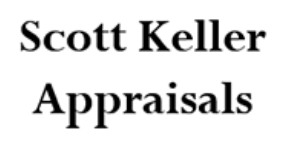A live weekly radio adventure through Indiana history with host Nelson Price.
Show airs live from noon to 1 p.m. ET each Saturday on WICR 88.7 FM in Indianapolis. Or install the WICR HD 1 app on your cell phone or computer and stream live from anywhere.
October 29, 2022
Slaughterhouse and saw factory history in Indy
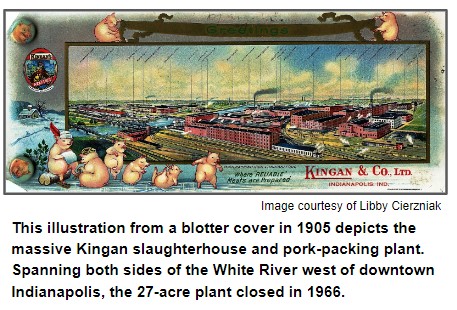
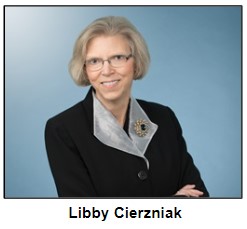 Excuse the creepy topics, but isn't it Halloween season? Appropriate, then, to time-travel to the late 19th and early 20th centuries when, as our guest puts it, "the city of Indianapolis had all the makings of a perfect horror movie set, the largest saw factory in the world, acres of stockyards and slaughterhouses, and the specter of ceilings dripping with something that appeared to be blood but on closer inspection would turn out to be catsup."
Excuse the creepy topics, but isn't it Halloween season? Appropriate, then, to time-travel to the late 19th and early 20th centuries when, as our guest puts it, "the city of Indianapolis had all the makings of a perfect horror movie set, the largest saw factory in the world, acres of stockyards and slaughterhouses, and the specter of ceilings dripping with something that appeared to be blood but on closer inspection would turn out to be catsup."
With the multiple slaughterhouses and pork-packing businesses, the king of the heap for about 100 years was unquestionably Kingan & Co., which had a five-story plant as part of a massive operation that encompassed 27 acres spanning both sides of the White River west of downtown Indy. Ironically, thousands of hogs once were slaughtered daily at the enterprise not far from the site today of the Indianapolis Zoo.
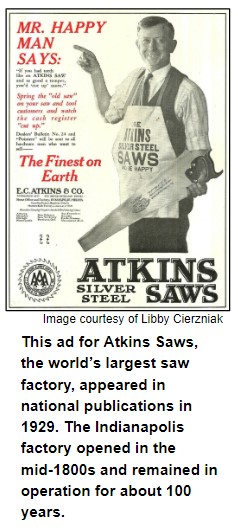 Also for about 100 years, Atkins & Co. Saws had the world's largest saw factory, which eventually employed more than 1,200 workers at the flagship plant in downtown Indianapolis. "With its trademark 'Atkins Always Ahead' slogan, the company was on the cutting edge of the saw industry," our guest, retired Indianapolis attorney Libby Cierzniak, has written.
Also for about 100 years, Atkins & Co. Saws had the world's largest saw factory, which eventually employed more than 1,200 workers at the flagship plant in downtown Indianapolis. "With its trademark 'Atkins Always Ahead' slogan, the company was on the cutting edge of the saw industry," our guest, retired Indianapolis attorney Libby Cierzniak, has written.
Libby has researched and written about slaughterhouses, meat-packing businesses and the saw factory either for her city history blog at indypolitan.com or, formerly, for historicindianapolis.com She also has written about the battles during the early 1900s between Indy-based catsup makers and public health officials over the use of a preservative and a farm on the southwest side that became, as she puts it, "the smelliest place in Indianapolis" after the city purchased it as a dumping ground for, among other things, dead animal residue from the multiple slaughterhouses.
During the 1870s, more than 500,000 hogs and 100,000 sheep and cattle were slaughtered in the city each year, according to newspaper accounts that Libby quotes in her blog. "In 1914, the city's pork packing industry employed 15,000 people at eight different packing houses," she writes. "And while Kingan's was the undisputed king, several other slaughterhouses also left their bloody mark on the city's history."
They include an enterprise run by an entrepreneur named Albert Worm who, Libby notes, "realized that consumers would likely reject a processed pork product labeled 'Worm Bacon'. So he adopted the 'Crown Brand' moniker for his growing product line and touted the cleanliness of his plant in advertisements."
Kingan's opened in 1863, eventually became the largest pork house in the world and finally shut down in 1966. It's been blamed by environmentalists for decades of pollution in White River, even while being innovative in the industry. During the 1920s, according to Libby's article, Kingan's "became the first meatpacker to sell sliced bacon".
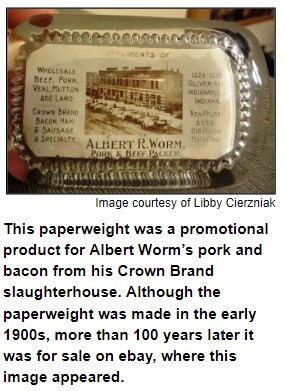 Saws made by Atkins remain prized for their quality or as collectibles, even though the factory in Indy closed in the early 1960s. Founded in the mid-1800s by E.C. Atkins, the business "made saws for every conceivable purpose, from four-inch jeweler's saws to 75-foot long saws," our guest Libby Cierzniak has written.
Saws made by Atkins remain prized for their quality or as collectibles, even though the factory in Indy closed in the early 1960s. Founded in the mid-1800s by E.C. Atkins, the business "made saws for every conceivable purpose, from four-inch jeweler's saws to 75-foot long saws," our guest Libby Cierzniak has written.
Libby, who retired last year from the law firm of Faegre Drinker, is a former trustee of the Indiana Historical Society. She has been a guest on previous Hoosier History Live shows, including programs about the postcard craze of the early 1900s; the Indianapolis connections of serial killer H.H. Holmes and the nearly 200-year-old debate about whether the proper name for Indiana residents is "Hoosier" or "Indianan".
In a recent blog post, Libby wrote about Sellers Farm, which was derided as "Smeller's Farm". That's because the city purchased the 225-acre property from farmer Amos Sellers "to solve an increasingly odorous problem that was plaguing Indianapolis", as described in her article. The slaughterhouses and meat-packing industries "brought the smell of dead and decaying animals" to the Hoosier capital. The former farm became a dumping ground as well as the site of businesses that converted the animal remains into products such as fertilizer. Today, the southwest side area is near the site of the Indianapolis Wastewater Treatment plant.
The catsup battles of the early 1900s didn't involve odors, but other aspects concerned health officials. In her article about the "bloody" catsup controversies, Libby wrote about Indy-based makers of the condiment that were using sodium benzoate, "a colorless, tasteless preservative", to prevent fermentation while their product was stored on grocers' shelves or in home pantries. Public health officials were concerned about the chemical's impact on people who consumed the catsup. Manufacturers fought efforts to ban the preservative, fearing that, without it, their catsup bottles would explode or leak and drip.
Your contributions helps keep Hoosier History Live on the air, on the web and in your inbox!

We'd like to thank the following recent individual contributors who make this show possible. For a full list of contributors over the years, visit Support the Show on our website.
- In memory of William (Bill) Mihay by Bob Wakefield
- Florence and John Stanton
- Aleta Hodge
- Peggy Hollingsworth
- Lorraine Phillips Vavul
- Margaret Smith
- Jane Hodge
- Jeff Price
- Joe Young
- Sue and Craig Thomson
- Richard Vonnegut
- Jim Lindgren
- Ken and Luan Marshall
Roadtrip: Maplelawn Farmstead and early Boone County
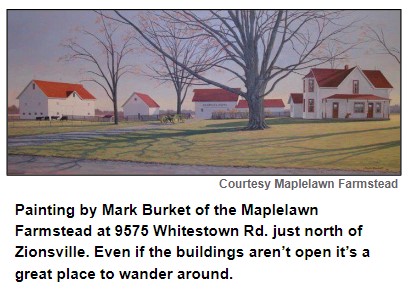
Guest Roadtripper Bonnie Carter of Zionsville celebrates forty years of being a community leader and volunteer, most recently on the boards of both the Indiana Historical Society in Indianapolis and Maplelawn Farmstead in Boone County. She tells us that the farmstead offers a great way to see an Indiana family farm as it looked in the 1930s during the Great Depression.
The farmhouse itself was built about 1860 before there was much of a town of Zionsville. You can also see the two-story, frame I-house, as well as a large English barn, c. early 1900s, a dairy barn, also c. early 1900s, a corn crib, a summer kitchen, two chicken coops, a goose house, two hog houses, an outhouse, a dog house, and a garage. It’s open to the public, and it’s a great place to stop, reflect, and listen to the quiet.
Perhaps Bonnie will tell us what an I-house is! Tune in on Saturday.
Molly Head, executive producer (317) 506-7164
Ryan DeRome, associate producer
Cheryl Lamb, administrative manager
Richard Sullivan, senior tech consultant
Pam Fraizer, graphic designer
Kathleen Madinger Angelone, Garry Chilluffo, consultants
Please tell our sponsors that you appreciate their support!

 Acknowledgments to WICR-FM, Fraizer Designs, The Indiana Album, Monomedia, Indiana Historical Bureau, Indiana Landmarks, Henri Pensis, Kielynn Tally, Genesis Brown, Leticia Vasselli, Heather McIntyre, and many other individuals and organizations. We are independently produced and are self-supporting through organizational sponsorship and through individual contribution at the yellow button on our newsletter or website. For organizational sponsorship, which includes logos, links, and voiced credits in the show, contact Molly Head at (317) 506-7164 or email her at molly@hoosierhistorylive.org. Our media reach continues to grow via podcasting.
Acknowledgments to WICR-FM, Fraizer Designs, The Indiana Album, Monomedia, Indiana Historical Bureau, Indiana Landmarks, Henri Pensis, Kielynn Tally, Genesis Brown, Leticia Vasselli, Heather McIntyre, and many other individuals and organizations. We are independently produced and are self-supporting through organizational sponsorship and through individual contribution at the yellow button on our newsletter or website. For organizational sponsorship, which includes logos, links, and voiced credits in the show, contact Molly Head at (317) 506-7164 or email her at molly@hoosierhistorylive.org. Our media reach continues to grow via podcasting.
© 2022 Hoosier History Live. All rights reserved.
|

